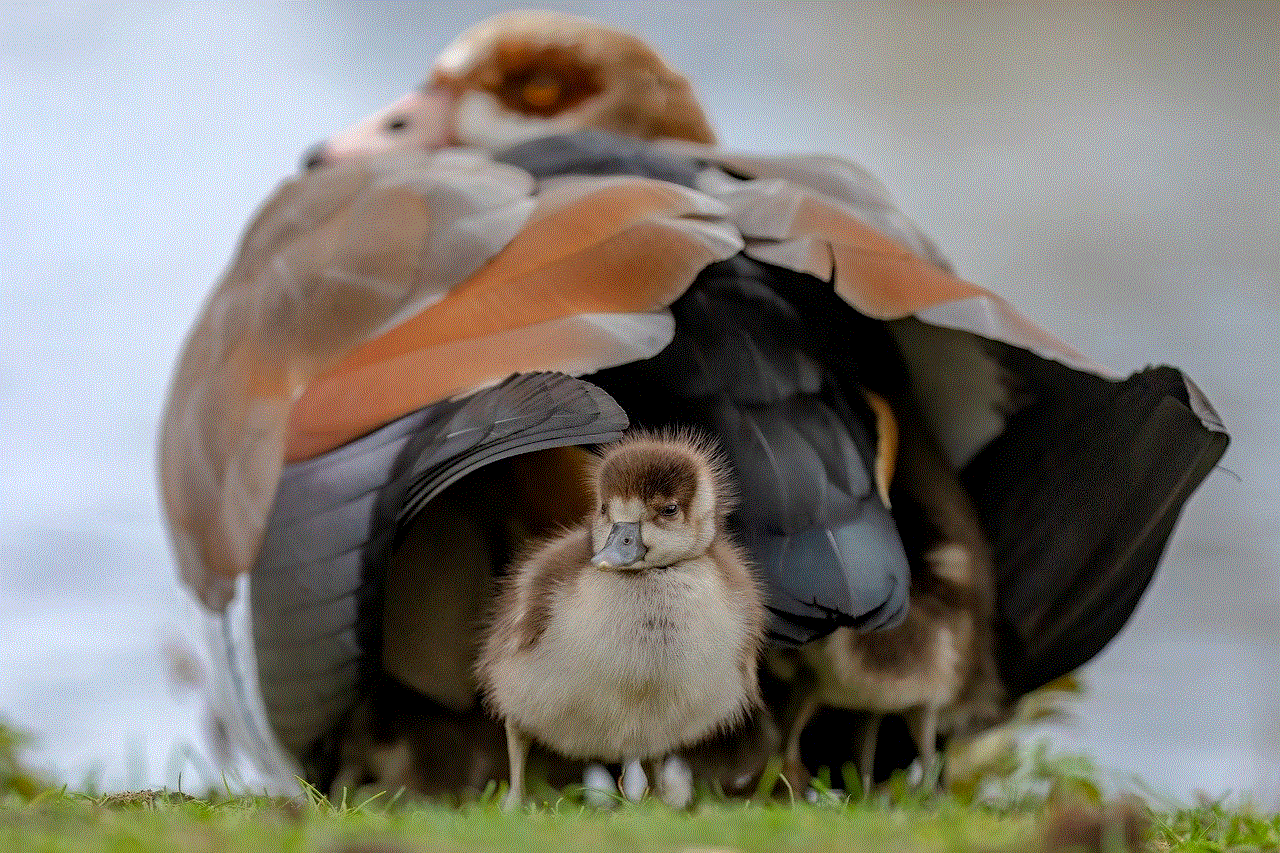how old do you have to be to get snapchat
Snapchat has become one of the most popular social media platforms in recent years, especially among younger generations. With its unique features such as disappearing messages and fun filters, it has attracted millions of users worldwide. However, many parents and guardians are concerned about the safety and appropriateness of this app for their children. One of the most frequently asked questions is, “how old do you have to be to get Snapchat?” In this article, we will dive into the minimum age requirement for Snapchat and explore the reasons behind it.
The minimum age requirement for Snapchat is 13 years old. This age limit is set by the Children’s Online Privacy Protection Act (COPPA), a federal law in the United States that protects the online privacy of children under 13. Snapchat, like other social media platforms, is required to comply with COPPA to safeguard the personal information of young users. As stated in the Snapchat’s Terms of Service, “If you are under the age of 13, you are not authorized to use the Services.”
While the minimum age requirement for Snapchat is 13, the app has a separate platform for users under 13 called “Snapkidz.” This version of Snapchat does not allow users to add friends or send messages, and the snaps are only saved locally on the device. It is essentially a photo and video editing tool for children to have fun with, but it does not have the social aspect of the regular app. However, Snapkidz was discontinued in 2015, and the company now recommends that children under 13 use other kid-friendly apps instead.
So, why is 13 years old considered the appropriate age to use Snapchat? According to experts, it is the age at which children start developing their digital literacy skills and understanding the consequences of their online actions. By 13, children have a better grasp of the internet, and they are more likely to make responsible decisions while using social media. Additionally, this age limit also aligns with the minimum age requirement for other popular social media platforms such as Instagram and TikTok .
However, the issue of age verification on social media platforms is a complex one. With the rise of fake accounts and online predators, many people question the effectiveness of age restrictions. While Snapchat does not require users to provide their date of birth during the sign-up process, they do have systems in place to detect and remove underage users. For instance, the app uses algorithms to scan user profiles and flag any suspicious activity. Users who are reported for being underage can also be banned from the platform.
Despite these measures, there have been cases where underage users have managed to circumvent the age restriction and create accounts on Snapchat. This highlights the need for parents to monitor their children’s online activities and educate them about the potential dangers of social media. As a parent or guardian, it is crucial to have open communication with your child and set appropriate boundaries for their internet usage.
One of the main concerns of parents regarding Snapchat is the potential for cyberbullying. With the app’s disappearing messages feature, it is easy for bullies to send hurtful messages and then claim that they never did. However, Snapchat has taken steps to address this issue by implementing a “Safety Center” within the app. This feature allows users to report inappropriate content and block or delete unwanted contacts. It also provides resources and tips for users to stay safe on the app.
Another concern is the exposure to mature content on Snapchat. While the app has strict guidelines against nudity and explicit content, it is challenging to monitor all the millions of snaps being sent daily. Moreover, there are “private” or group chats on Snapchat where users can share whatever they want without the risk of it being reported. This makes it challenging for parents to know what their child is viewing or sending on the app.
To combat this issue, Snapchat has introduced a feature called “Snap Map,” which allows users to see the location of their friends on a map. This feature has raised privacy concerns, but it also enables parents to monitor their child’s whereabouts and ensure their safety. Parents can also use parental control apps to limit the amount of time their child spends on Snapchat and monitor their activity.
In conclusion, the minimum age requirement for Snapchat is 13 years old, but it is ultimately the responsibility of parents to decide when their child is ready to use the app. As with any social media platform, there are risks involved, and it is crucial to educate children about online safety and responsible usage. Parents should also have open communication with their child and monitor their online activities to ensure their well-being. Snapchat has taken steps to make the app safer for younger users, but it is a collective effort between the company, parents, and users to maintain a positive and safe environment on the platform.
toys for 10 year olds boys
Toys are an integral part of a child’s development and growth, especially for 10 year old boys. At this age, they are transitioning from being little kids to becoming pre-teens, and their interests and preferences are constantly evolving. As parents, it can be challenging to keep up with the latest trends and find toys that are not only fun but also educational and age-appropriate for our growing boys. In this article, we will explore the top toys for 10 year old boys that are sure to keep them entertained, engaged, and learning.
1. STEM Toys
STEM (Science, Technology, Engineering, and Math) toys have gained popularity in recent years, and for a good reason. These toys not only provide hours of fun but also help develop critical thinking, problem-solving, and creativity skills. For 10 year old boys, some excellent STEM toys include building sets like Lego Technic, Snap Circuits, and K’NEX. These toys allow them to build and create their own structures, machines, and circuits, encouraging hands-on learning and experimentation.
2. Outdoor Toys
At the age of 10, boys are full of energy and need to burn it off. Outdoor toys provide the perfect opportunity for them to get some exercise, fresh air, and have fun at the same time. Some popular outdoor toys for 10 year old boys include bikes, scooters, and skateboards. These toys not only promote physical activity but also improve balance, coordination, and confidence. Other great outdoor toys include sports equipment like soccer balls, basketballs, and baseball gloves, encouraging teamwork and sportsmanship.
3. Board Games
Board games have been around for centuries, and they are still a hit among 10 year old boys. Not only are they fun and entertaining, but they also teach valuable skills such as strategy, logic, and decision-making. Some popular board games for this age group include Monopoly, Clue, and Settlers of Catan. These games also provide an opportunity for family bonding and quality time, away from screens and devices.
4. Coding Toys
In today’s digital age, coding has become an essential skill, and there are plenty of toys that can help 10 year old boys learn the basics of coding in a fun and interactive way. One such toy is the Osmo Coding Starter Kit, which uses physical blocks to teach coding concepts. Another popular option is the Sphero Mini, a small robotic ball that can be programmed using a smartphone or tablet. These toys not only introduce kids to coding but also foster problem-solving, critical thinking, and creativity.
5. Remote Control Toys
Remote control toys have been a favorite among boys for decades, and they continue to be popular among 10 year olds. These toys allow them to feel in control and use their imagination as they navigate through obstacles and perform stunts. Remote control cars, helicopters, and drones are some of the most sought-after toys in this category. They also provide a great opportunity for outdoor play and exploration.
6. Science Kits
For boys with a love for science, there are plenty of science kits available that cater to their interests and curiosity. These kits come with all the materials and instructions needed to conduct various experiments and learn about different scientific principles. Some popular science kits for 10 year old boys include crystal growing kits, volcano making kits, and rocket launching kits. These toys not only provide a fun and engaging learning experience but also spark interest and passion for science.
7. Role-Playing Toys
At the age of 10, boys are still in the midst of their imaginative play phase, and role-playing toys are perfect for encouraging this. Toys like action figures, superhero costumes, and toy guns allow boys to let their imagination run wild and act out their favorite characters and scenarios. These toys also promote social skills, creativity, and storytelling.
8. Robotics Kits
Robotics kits are a step up from coding toys and provide a more hands-on experience for learning about robots and how they work. These kits come with all the necessary parts and instructions to build and program a robot, allowing 10 year old boys to create their own working machines. Some popular robotics kits for this age group include Lego Mindstorms and Vex Robotics. These toys not only teach kids about robotics, but also incorporate STEM concepts and problem-solving skills.
9. Puzzle Toys
Puzzles have always been a classic toy, and there are many options available for 10 year old boys. Jigsaw puzzles, Rubik’s cubes, and brain teasers are just a few examples that promote problem-solving, spatial awareness, and hand-eye coordination. These toys also come in a variety of themes, from animals to famous landmarks, allowing kids to learn while having fun.



10. Virtual Reality Headsets
Virtual Reality (VR) has become increasingly popular in recent years, and there are now VR headsets available specifically designed for kids. These headsets provide an immersive and interactive experience, allowing 10 year old boys to explore virtual worlds and learn about different topics. Some VR headsets also come with educational games and activities, making them a fun and educational toy.
In conclusion, toys play a crucial role in the development and growth of 10 year old boys. The toys mentioned above are just a few of the many options available, and it’s essential to consider your child’s interests and preferences when choosing a toy. It’s also important to strike a balance between fun and education, as these toys can provide both. With the right toys, 10 year old boys can continue to learn, grow, and have fun at the same time.
potty training tips for girls
Potty training is a major milestone in a child’s development, and it can be both exciting and daunting for parents, especially when it comes to potty training girls. While there is no exact timeline for when a child should be potty trained, most children are ready between the ages of 2 and 3. However, every child is different and may show signs of readiness at different times. In this article, we will discuss some helpful tips for potty training girls to make the process as smooth and stress-free as possible for both parents and their little ones.
1. Look for signs of readiness
Before starting the potty training journey with your little girl, it’s important to make sure she is physically and emotionally ready. Some signs of readiness include being able to walk and sit independently, having regular bowel movements, showing an interest in the bathroom, and being able to follow simple instructions. It’s also essential to make sure your child is not going through any significant changes such as moving to a new house or welcoming a new sibling, as this may affect their potty training progress.
2. Introduce the concept early on
It’s never too early to start introducing the concept of potty training to your little girl. You can start by reading books or watching videos about potty training, so your child becomes familiar with the idea. You can also let your child watch you or an older sibling use the toilet, so they understand what is expected of them. This will help to reduce any fear or anxiety they may have about the process.
3. Choose the right equipment
When it comes to potty training girls, choosing the right equipment is essential. There are two main options for potty training equipment: a standalone potty or a potty seat that fits on top of a regular toilet seat. Some children may feel more comfortable with one over the other, so it’s a good idea to let your child choose which one they prefer. Additionally, make sure the equipment is the right size for your child and has a stable base to prevent any accidents.
4. Practice sitting on the potty
Before your child is ready to use the potty, it’s a good idea to let them practice sitting on it fully clothed. This will help them get used to the feeling of sitting on the potty and make them feel more comfortable when it’s time to use it. You can also have your child sit on the potty while you read a book or sing a song to make it a fun and positive experience.
5. Create a routine



Children thrive on routine, and potty training is no exception. Introduce a potty training routine that works for you and your child. For example, you can have your child sit on the potty first thing in the morning, before and after naps, and before bedtime. This will help them get used to the routine and make it easier for them to understand when it’s time to use the potty.
6. Use positive reinforcement
Positive reinforcement is crucial when it comes to potty training, as it encourages your child to continue using the potty. Praise your child every time they successfully use the potty, and consider using a reward system such as stickers or a small treat for extra motivation. However, it’s important not to pressure or punish your child if they have accidents, as this can create negative associations with using the potty.
7. Dress for success
When potty training girls, it’s essential to dress them in clothes that are easy to take off and put back on. Avoid clothes with lots of buttons, zippers, and snaps, as this can make it difficult for your child to use the potty independently. Consider dressing your child in loose-fitting bottoms that are easy to pull up and down, such as leggings or sweatpants.
8. Teach good hygiene habits
Potty training is not just about using the toilet; it’s also an opportunity to teach your child good hygiene habits. Make sure to teach your child to wash their hands after using the potty and to wipe themselves from front to back to prevent any infections. You can also encourage your child to flush the toilet and put the lid down, which is a good practice for the future.
9. Be patient and consistent
Potty training takes time, and every child learns at their own pace. It’s essential to be patient and consistent with your child to help them succeed. If your child is not showing signs of readiness or is having a hard time with the process, it’s okay to take a break and try again in a few weeks. Consistency is also key, so try to stick to the routine and keep praising and encouraging your child.
10. Consider using a potty training doll
Some parents find it helpful to use a potty training doll to demonstrate the process to their child. This can be especially useful for girls, as they can mimic what the doll is doing. You can also use the doll to show your child how to wipe and flush the toilet. This can make the process more interactive and fun for your child.
11. Don’t stress
Potty training can be a stressful time for both parents and children, but it’s important not to let that stress affect your child. If your child senses that you are anxious, they may become anxious themselves, which can make the process more challenging. Remember to stay calm and positive, and your child will follow your lead.
12. Be prepared for setbacks



Like any new skill, there will be setbacks and accidents along the way. It’s essential to be prepared for this and not get discouraged. Instead of getting frustrated, use these moments as opportunities to reinforce good habits and continue to encourage your child. With patience and consistency, your child will eventually master potty training.
In conclusion, potty training is a significant milestone for both children and parents. While it may seem like a daunting task, with the right approach and mindset, it can be a smooth and successful experience. Remember to look for signs of readiness, introduce the concept early on, choose the right equipment, and create a routine. Use positive reinforcement and teach good hygiene habits, be patient and consistent, and don’t stress. With these tips in mind, your little girl will be potty trained in no time.